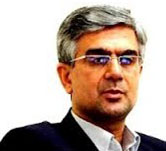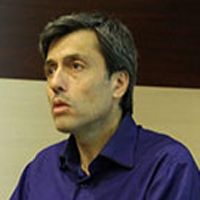Description of Anthropometric, Body composition and physiological profiles of male and female elite rowers in Iran
The aim of this study was to describe the anthropometric, body composition and physiological profile of elite rowers of Iran and Compare them with selected countries, in order to help sports talent identification nationwide and assess them.
For the purpose, 25 elite Lightweight and Heavyweight rowers (18 males, 7 females) who participated in the 2010 Guangzhou Asian Games, were assessed. Anthropometric profile was measured according to ISAK instruction including height, weight, 5 points girth, 2 points width in addition to sitting height and arm span. Body composition variable measurements were weight, body fat percentage, and BMI. Also, Physiological measurements were aerobic indices (HRVO2max, Pmax, Vo2max) and anaerobic indices (absolute and relative peak power of both upper and lower body). Descriptive statistics were used for describing data and differences between males and females, respectively.
The results of this study indicate that there was a significant difference between light and heavyweight males and females in all variables (anthropometric, body composition and physiological), except HRVO2max in the heavyweight group (P≤0.05).
According to our study, national rowers of Iran are at a higher level of anthropometric indices compared with physiological factors. However, a physiological profile, they have an acceptable condition in comparison with other athletes in selected countries. Accordingly, it seems that with Improvement the quality and quantity of program training in national rowers can increase the number of global medals for country, because it was shown national rowers had a good position in anthropometric and physiological profile.
-
Comparison of metabolic profiles of elite male karate athletes with different physical fitness levels during different phases of simulated competitions
Masoud Rahnama, Hamid Mohebi *,
Metabolism and Exercise a biannual Jounal, -
The response of corticospinal excitability to different intensities of postactivation potentiation in young trained subjects
Hassan Kosari *, Pezhman Motamedi, , Shahriar Gharibzade, Shapour Jaberzadeh
Journal of practical studies of Biosciences in Sport, -
The role of olfactory sensory neurons in improving working memory following aerobic exercise training in adult male rats
Farzaneh Zeynali, Mohammad Shariatzadeh Joneydi *, Jalaledin Noroozi, , Mohammad Reza Raoufy
Sport Physiology, -
The role of neurotransmitters (serotonin and dopamine) in central nervous system fatigue during prolonged exercise
, Leila Fasihi *
Journal of New Approaches in Exercise Physiology, Winter and Spring 2023



